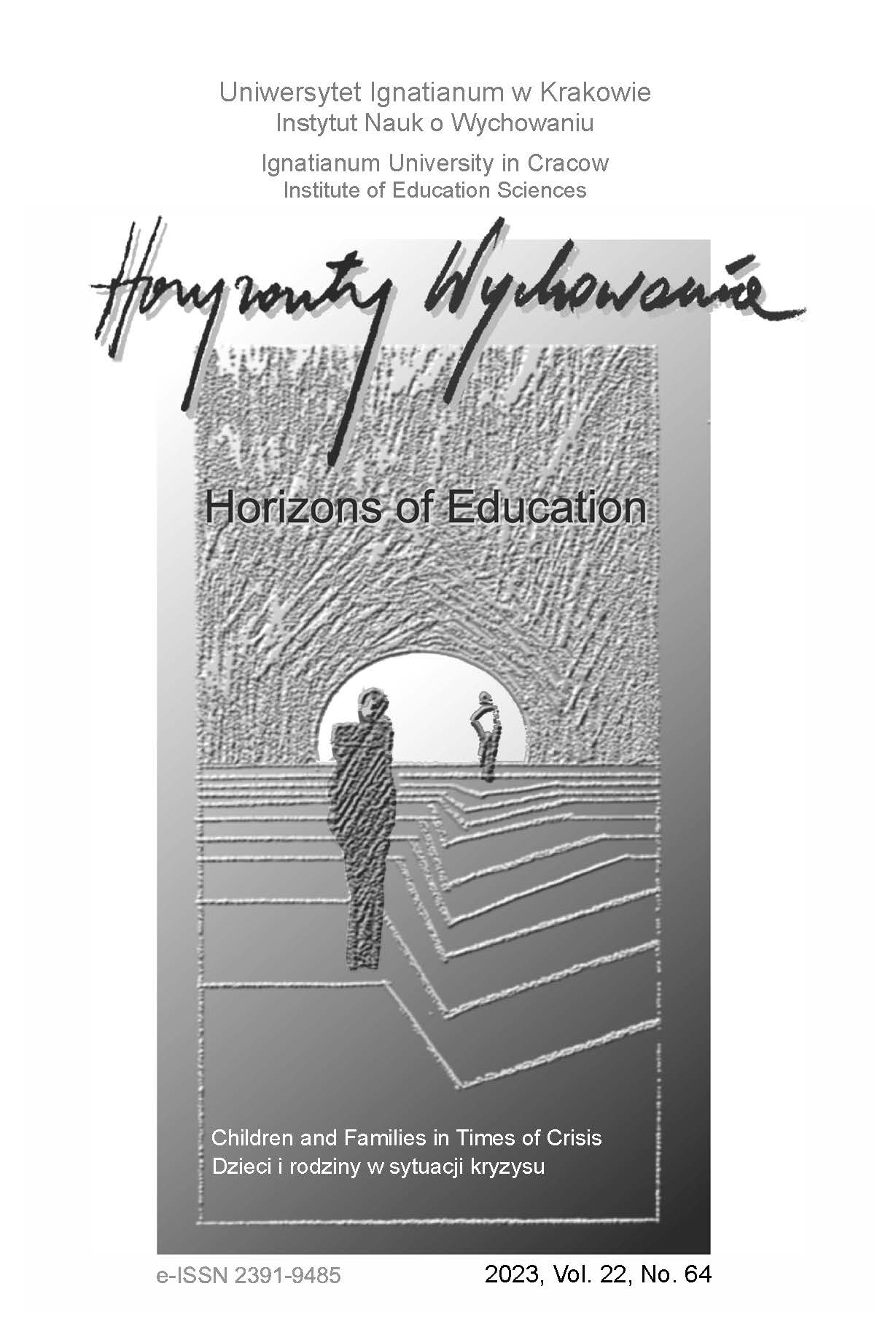Dealing with Death: Crisis and Resilience in Adolescent Boys
Abstract
RESEARCH OBJECTIVE: The research investigates how young boys progress in life after the loss of their fathers. It explores the adjustments they make, the coping mechanisms they develop to navigate life, and the male roles they assume in the family. Additionally, it examines how family can aid and support their coping and adjustment process.
THE RESEARCH PROBLEM AND METHODS: This study utilises a case study methodology focused on gaining an understanding of the lives of two adolescent boys who experienced the death of their fathers in the early formative years of their lives.
THE PROCESS OF ARGUMENTATION: The paper focuses on five themes- family dynamics, life transitions with and without their fathers, post-loss reassignment of family roles, present circumstances, and future goals.
RESEARCH RESULTS: A qualitative analysis of the data revealed that participants’ belief systems, family support, and striving toward future goals helped them to be resilient in this event.
CONCLUSIONS RECOMMENDATIONS AND APPLICABLE VALUE OF RESEARCH: While most research typically emphasises the negative impacts of death on people, this study demonstrates how individuals’ can be resilient, dependent on both person-related factors and environmental factors. To help adolescents who are grieving become resilient, the paper offers intervention and coping strategies through counselling, the availability of support networks, and combined efforts by the state and educational institutions.
References
Antonovsky, A. (1987). Unravelling the mystery of health: How people manage stress and stay well. Jossey-Bass Inc.
Antonovsky, A., & Sourani, T. (1988). Family sense of coherence and family adaptation. Journal of Marriage and the Family, 50, 79–92. http://dx.doi.org/10.2307/352429
Ariès, P. (1975). Western attitudes toward death: From the Middle Ages to the present (P.M. Ranum, Trans.). John Hopkins University Press.
Beck, A.T. (1964). Thinking and depression: II. Theory and therapy. Archives of General Psychiatry, 10(6), 561–571.
Dennett, D. (1984). Elbow room: The varieties of free will worth wanting. MIT Press.
Dickey, S. (2010). The pleasures and anxieties of being in the middle: Emerging middle-class identities in urban South India. Modern Asian Studies, 46(3), 559–599
Fernandes, L. (2006). India’s new middle class: Democratic politics in an era of economic reform. University of Minnesota Press
Garmezy, N. (1991). Resiliency and vulnerability to adverse developmental outcomes associated with poverty. American Behavioral Scientist, 34(4), 416–430. https://doi.org/10.1177/0002764291034004003
Gersten, J.C., Langner, T.S., Eisenberg, J.G., & Orzeck, L. (1974). Child behavior and life events: Undesirable change or change per se? In B.S. Dohrenwend, & B.P. Dohrenwend (Eds.), Stressful life events: Their nature and effects (pp. 159–170). John Wiley & Sons.
Gooptu, N. (Ed.). (2013). Enterprise culture in neoliberal India: Studies in youth, class, work and media. Routledge.
Gulati, N. (2021). Philippe Aries, childhood and the everyday. Contemporary Education Dialogue, 19(1), 132–155. https://doi.org/10.1177/09731849211053180
Hayes, S.C., Luoma, J.B., Bond, F.W., Masuda, A., & Lillis, J. (2006). Acceptance and commitment therapy: model, processes and outcomes. Behaviour Research and Therapy, 44(1), 1–25. https://doi.org/10.1016/j.brat.2005.06.006
Jeffrey, C. (2010). Timepass: Youth, class, and time among unemployed young men in India. American Ethnologist, 37(3), 465–481.
Kalisch, R., Müller, M.B., & Tüscher, O. (2015). A conceptual framework for the neurobiological study of resilience. Behavioral and Brain Sciences, 38, e92. https://doi.org/10.1017/S0140525X1400082X
Lukose, R.A. (2009). Liberalization’s children: Gender, youth, and consumer citizenship in globalizing India. Duke University Press.
Masten, A.S. (2001). Ordinary magic: Resilience processes in development. American Psychologist, 56(3), 227–238.
Miller, P., & Rose, N. (2008). Governing the present: Administering economic, social and personal life. Polity Press.
Patton, M.Q. (2002). Qualitative research & evaluation methods (3rd ed.). Sage.
Putnam, R.D. (2000). Bowling alone: The collapse and revival of American community. Simon & Schuster.
Solimano, A. (2014). Economic elites, crises, and democracy: Alternatives beyond neoliberal capitalism. Oxford Academic. https://doi.org/10.1093/acprof:oso/9780199355983.001.0001
Trask-Tate, A., Cunningham, M., & Lang-DeGrange, L. (2010). The importance of family: The impact of social support on symptoms of psychological distress in African American girls. Research in Human Development, 7(3), 64–182.
Wagnild, G., & Young, H. (1993). Development and psychometric evaluation of the Resilience Scale. Journal of Nursing Measurement, 1(2), 165–178.
Walsh, F. (1996). The concept of family resilience: Crisis and challenges. Family Processes, 35(3), 261–281. https://doi.org/10.1111/j.1545-5300.1996.00261.x
Walsh, F. (2012). Facilitating family resilience: Relational resources for positive youth development in conditions of adversity. In M. Ungar (Ed.), The social ecology of resilience: A handbook of theory and practice (pp. 173–185). Springer.
Weber, M. (1958). The religion of India: The sociology of Hinduism and Buddhism (H.H. Gerth & D. Martindale, Trans.). The Free Press.
Werner, E.E. (1995). Resilience in development. Current Directions in Psychological Science, 4(3), 81–84. https://doi.org/10.1111/1467-8721.ep10772327
Yates,T., Egeland, B., & Sroufe, L.A. (2003). Rethinking resilience: A developmental process perspective. In U.S. Luthar (Ed.), Resilience and vulnerability: Adaptation in the context of childhood adversities (pp. 243–266). Cambridge University Press.
Young, M. (1958). The rise of the meritocracy, 1870–2033. Thames & Hudson.
Copyright (c) 2023 HORIZONS OF EDUCATION

This work is licensed under a Creative Commons Attribution-NoDerivatives 4.0 International License.
Authors who publish in this journal agree to the following terms:
- Authors retain the copyright to their work while granting the journal the right of first publication. The work will be simultaneously licensed under a CC BY-ND license, which permits others to share the work with proper credit given to the author and the original publication in this journal.
- Authors may enter into additional, non-exclusive agreements for the distribution of the published version of the work (e.g., posting it in an institutional repository or publishing it in another journal), provided that the original publication in this journal is acknowledged.
We allow and encourage authors to share their work online (e.g., in institutional repositories or on personal websites) both before and during the submission process, as this can foster beneficial exchanges and lead to earlier and increased citations of the published work. (See The Effect of Open Access). We recommend using any of the following academic networking platforms:





